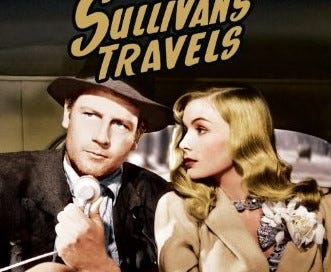In 1941, visionary director Preston Sturges unveiled Sullivan's Travels, a cinematic gem starring Joel McCrea and Veronica Lake. This satirical comedy delves into the life of John L. Sullivan (McCrea), a successful Hollywood director yearning to create a profound social commentary. To authentically capture the struggles of the downtrodden, Sullivan embarks on a journey disguised as a vagrant, immersing himself in the hardships of the common man. Along the way, he encounters a spirited aspiring actress, known only as "The Girl" (Lake), who becomes his companion in this eye-opening expedition.
Veronica Lake's portrayal is accentuated by the duality of her wardrobe: from the allure of glamorous attire to the ruggedness of hobo garb. The genius behind these transformative costumes is none other than Edith Head, a luminary in fashion design. Tasked with concealing Lake's pregnancy during filming, Head masterfully crafted outfits that maintained the film's visual integrity. Her collaboration with Alfred Hitchcock further solidified her legacy, contributing to the iconic aesthetics of classics like Rear Window and Vertigo. Throughout her illustrious career, Head's unparalleled talent earned her eight Academy Awards, a testament to her indelible impact on cinema.
At its core, Sullivan's Travels explores the chasm between privilege and adversity. Sullivan's quest to understand genuine hardship leads him to an unexpected revelation: the universal power of laughter as a remedy for suffering, transcending socioeconomic boundaries. Initially met with mixed reviews, the film's nuanced narrative has since garnered acclaim, resonating with screenwriters and audiences alike. Its enduring theme underscores the significance of providing joy through various forms of entertainment, affirming that even in the face of adversity, humor remains an essential balm for the human spirit.
In reflecting upon Sullivan's Travels, one is reminded of the profound impact that storytelling, whether through film, literature, or other mediums, has on our collective consciousness. It serves as a poignant reminder that while the pursuit of artistic significance is noble, the ability to elicit genuine joy and laughter holds an equally esteemed place in the tapestry of human experience.




